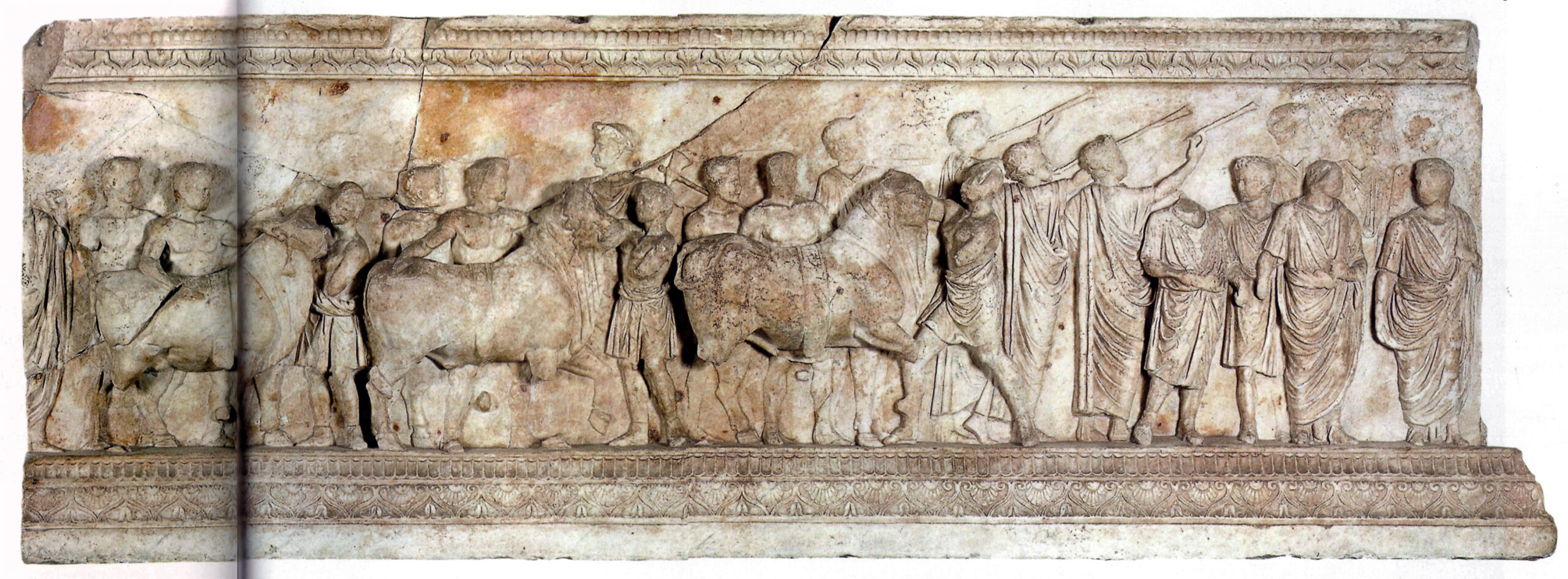Attalus II’s pompe in Delphi (Attaleia)
| TITLE: |
| Attalus II’s pompe in Delphi (Attaleia) |
| DATE: |
| 160-159 BC |
| TEXT: |
| Syll.3 672 CGRN 202 |
| EDITIONS/TRANSLATIONS: |
| Austin, M. M. (2006). The Hellenistic world from Alexander to the Roman conquest: a selection of ancient sources in translation, Cambridge University Press, Cambridge, p. 422 CGRN 202 |
KEYWORDS: |
| Words used to mean procession: |
| Vb. πομπεύω (l. 56, 58, 59, πομπευόντω) |
| Word used to mean the cult images: |
| εἰκόνα (l. 62-63, τὰν εἰκόνα τοῦ βασιλέως Ἀττάλου) |
| Gods or other entities named: |
| Apollo (l. 55, 58) |
| Description of the cult images: |
| Procession’s route: |
| From the threshing floor to the temple of Apollo (l. 58-59, πομπευόντω δὲ ἐκ τᾶς ἅλωος ἐν τὸν ναόν) |
| Frequency with which the procession takes place: |
| Every 13th of the month of Heracleius (c. May, l. 55-56, τοῦ Ἡρακλείου (…) δὲ τρεισκαιδεκάται) |
| Performers: |
| The priests of Apollo and of the other gods, the prytaneis, the magistrates, and the children wearing crowns (l. 55-57, οἵ τε ἱερεῖς τοῦ Ἀπόλλωνο[ς] καὶ τῶν ἄλλων θεῶν καὶ πρυτάνεις καὶ ἄρχοντες καὶ οἱ παῖδες ἐστεφανωμένοι) |
| References to the public attending the procession: |
| The children wearing crowns (l. 57, οἱ παῖδες ἐστεφανωμένοι) |
| Rites related to the procession: |
| The priest of Apollo made a prayer and proclaimed the name of the sacrifice as being the Attaleia (l. 59-60, οἱ ἱερεῖς τοῦ Ἀπόλλωνος, κατευχέστων ποταγορεύοντες τὰν θυσίαν Ἀττάλεια καθὼς εἴθισται) |
| Allusions to conduct or forms of reverence: |
| Other remarkable elements: |
| It is a decree of Delphi concerning a foundation provided by the king of Pergamon Attalus II Philadelphus (Ἄτταλος Β΄ ὁ Φιλάδελφος, which means “the brother-loving”; 220–138 BC), according to Harris 2015, n.38: “his document is a public measure enacted by the city of Delphi”; in sum, king Attalus made two donations, one of 18,000 drachmas for the education of children (lines 6-8), the other for sacrifices and processions (lines 44-63). So that the resolutions of the decree were effectively done, it was inscribed on the statue base of king Attalus II (l. 61-63, ὅπως δὲ καὶ ἐμφανῆ ᾖ τὰ ἐψηφισμ[έ]να, ἀναγράψαι τὸ ψάφισμα ἐπὶ τὰν εἰκόνα τοῦ βασιλέως Ἀττάλου). |
| BIBLIOGRAPHY: |
AUSTIN, M. M. (2006). The Hellenistic World from Alexander to the Roman Conquest: A Selection of Ancient sources in Translation, Cambridge University Press, Cambridge, p. 422. BÖMMER (1952), RE: s.v. Pompa. Herrscher, Vol. XXI.2, p. 1965, n.278. HARRIS, E. (2015). “Toward a Typology of Greek Regulations about Religious Matters”, Kernos, 28, pp. 53-83 HARRIS, E. and CARBON, J. M. (2015). “The Documents in Sokolowski’s Lois sacrées des cités grecques (LSCG)”, Kernos 28, p. 22 n.80 NOCK, A. D. (1930): “Σύνναος θεός”, Harvard Studies in Classical Philology 41, p.23 |
